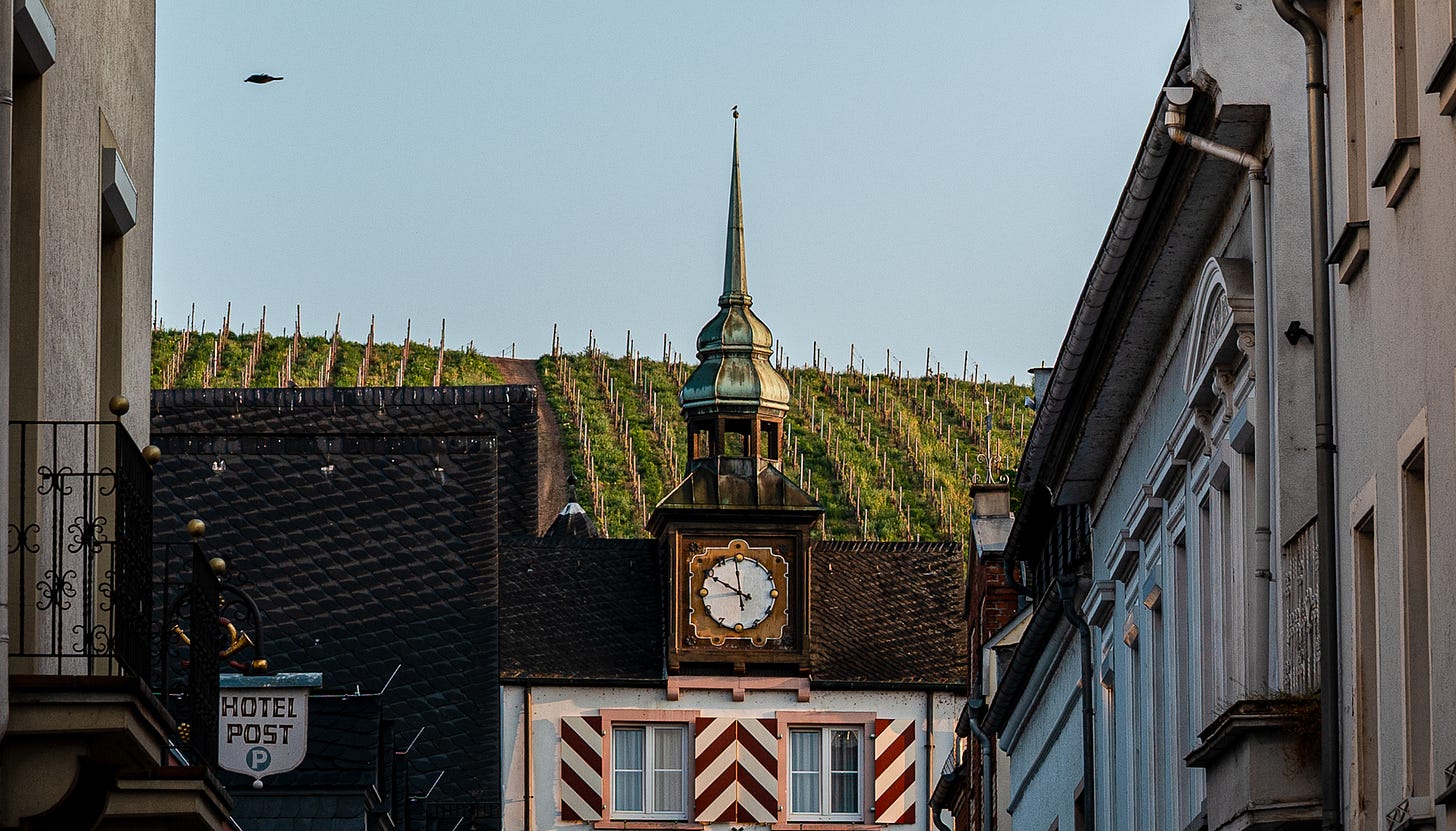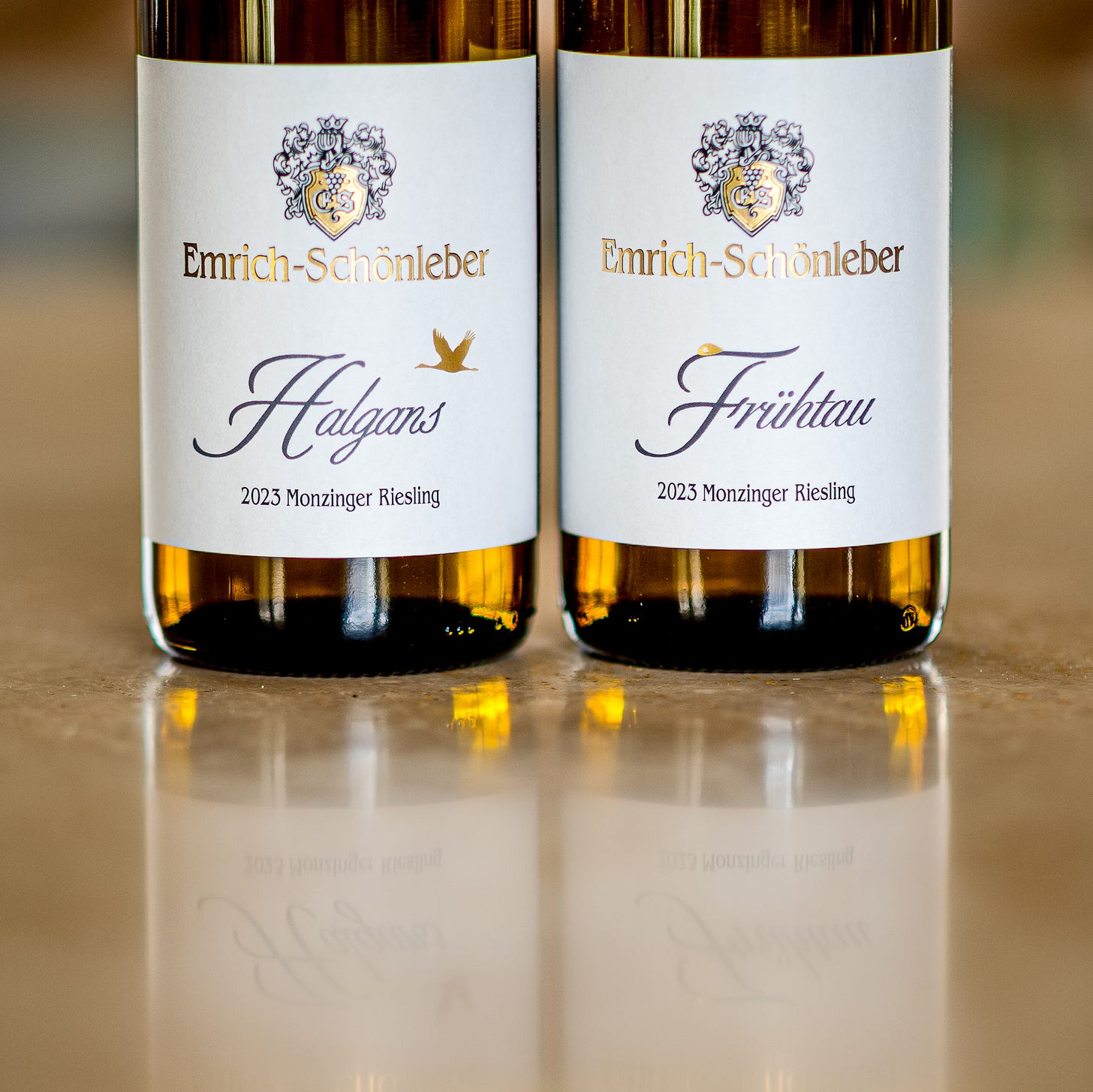Need Time: German Rieslings
… two gems from the 2023 vintage …
When you serve mature, bone-dry German Riesling to guests they are genuinely surprised and astonished by the energy and outright quality that they deliver. I have been serving a 2016 Riesling from Emrich Schönleber - the producer of the two wines listed below - over the last month or so and the feedback has been immensely positive.
Both the wines below are young. They will not be showing their best until the early 2030s: enough time for them to age and evolve into an astonishingly precise and accomplished wine.
The 2023 vintage in Germany started well with both winter and spring being relatively straightforward, both seasons saw relatively mild temperatures and plenty of rainfall – albeit with local bouts of damaging frost. Budburst and flowering took place without any problems and all looked good.
However, the summer evolved in a mixed fashion. There was plenty of warmth, but not as concentrated as in a few earlier vintages, but there was very little rainfall. Drought was on the horizon and some of the younger vines began to shutdown. Ripeness was achieved and vineyard managers had to work very hard to ensure grapes reached full ripeness. Heavy rains arrived just prior to the harvest, that were useful to counteract the dry patch, but raised the risk of disease. However, the harvest was warm and sunny resulting in good quality grapes heading into the winery.
Emrich Schönleber is a family business dating back to the mid-18th century, with 20 hectares of vineyard, and Riesling accounting for 85% of all plantings. The Wine & Spirit Education Trust rank this property as a significant producer in the Nahe alongside Dönhoff. Situated between the Mosel and Rheinhessen, the small estates in the region are scattered over a large area, with only around 4,000 hectares of vines planted. A broad array of different soils and plenty of complex microclimates make it difficult to define generically it precisely.
1 - Emrich Schönleber, Monzinger Riesling Trocken, Fruhtau, 2023
£199.93 - case of 6: equivalent £33.32
Nose is enticing and full of fresh herbs and precision. Palate is fairly closed and the bottle needs to be opened for a while to begin to see how this wine will evolve. Concentrated, and has the hallmarks of evolving over the next 6 to 8 years to be a perfectly dry, focused and utterly delicious creation. 100% from the Frühlingsplätzchen vineyard and classified as an Ortsweing although it has gone through the same integrity of production as the higher classification of a Grosses Gewächs. It will probably evolve into the early 2040s acquiring more complexity and character as the years pass.
2 - Emrich Schönleber, Monzinger Riesling Trocken, Halgans, 2023
£205.93 - case of six: equivalent £34.32
Although this is already very pronounced with deeper flavours and concentration than the Fruhtau above, it is very drinkable today, but just needs to be forgotten about until the majesty of this wine will astonish your guests in the early 2030s. There is a richness here that is very appealing. Bone, bone-dry with an abundance of mineral flavours of flint and stone.
For both of these wines think peppered fresh salad niçoise, tuna tartare, or a combination of crab and chorizo alongside fried gnocchi and mixed plenty of plum tomatoes, parsley, chicken stock, white wine and shallots. The acidity and freshness are a perfect foil.
Footnote. German Wines and the British: UK consumers struggle with Riesling. There is a perception left over from earlier years - brands such as Blue Nun and Black Tower fuelled the reputation - that all German wine is sweet and not very good. These outdated associations with low-quality sweet wines, complex labelling, and a lack of targeted marketing have created a gap between Riesling’s reality and in its perception by the average consumer. There are many superbly made wines that are dramatically under the radar, and it is a subject that I shall return to over time.



